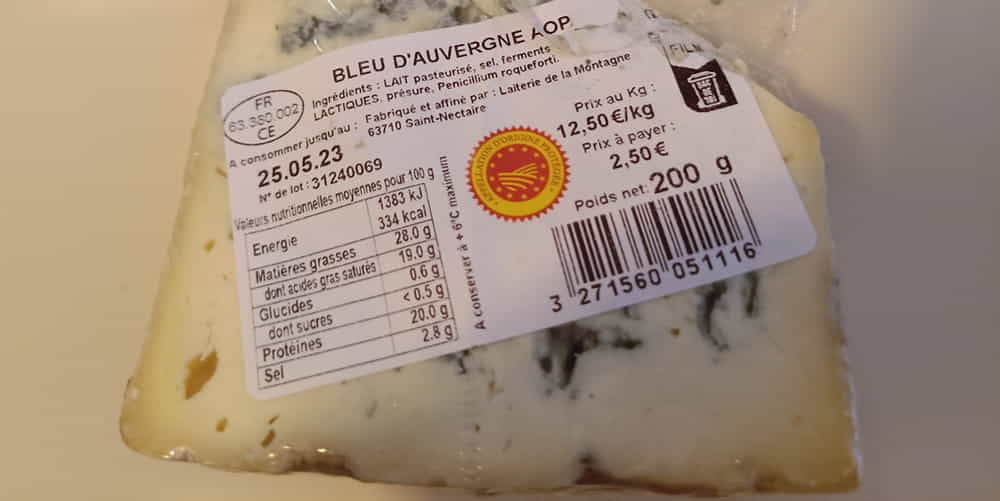SOIXANTE-NEUF FROMAGES FRANÇAIS
Jeannine & Roger's French Cheese Odyssey
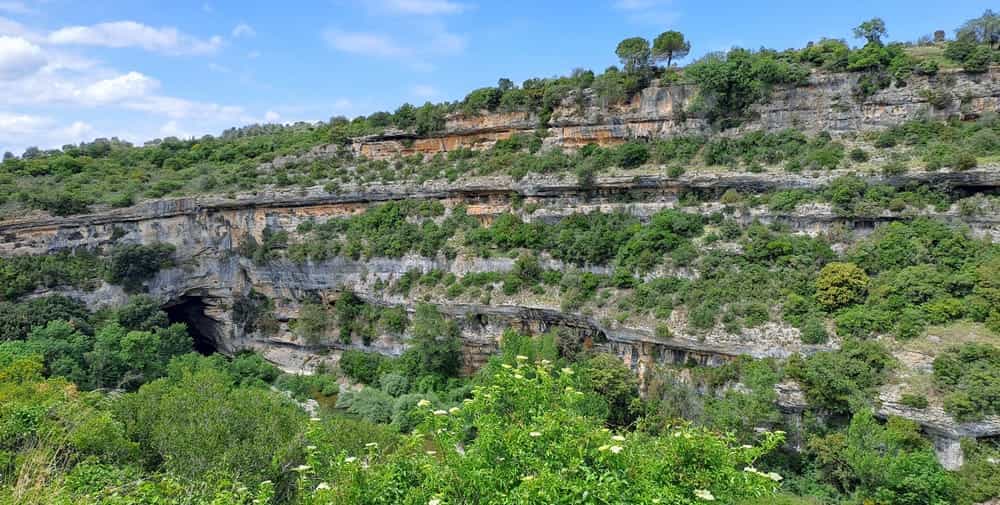
Minerve - 18th May
It is Ascension Day or Holy Thursday; it commemorates the Christian belief of the bodily Ascension of Jesus into heaven, however for the French it is a long weekend because they bridge the gap and take Friday off as well. We planned our day around the public holiday by doing things that were tourist related, self guided, or involved food. The large supermarket chains decided it was all right to open today but with slightly reduced hours to respect Christian beliefs; to Carrefour that means you close half an hour early.
First stop was Lastours, about 12km north of Carcassonne in the valley of the Orbiel. There are four separate small castles built on a large 300m high rocky ridge. The castles were built to control the access to Montagne Noire (Black Mountains) and the Cabardes region.
These are some of the few original Cathar castles left and have therefore been classified as historical monuments with ongoing archaeological excavations; for us this means a huge fee to walk up a very steep mountain for 2 hours to see some ruins. We chose the cheaper option which was to do a geocache across the valley and get impressive views of the town and the castles. The four castles look like they are in a row; however they are positioned on the same axis providing them with a view in all directions that their enemies could approach from.
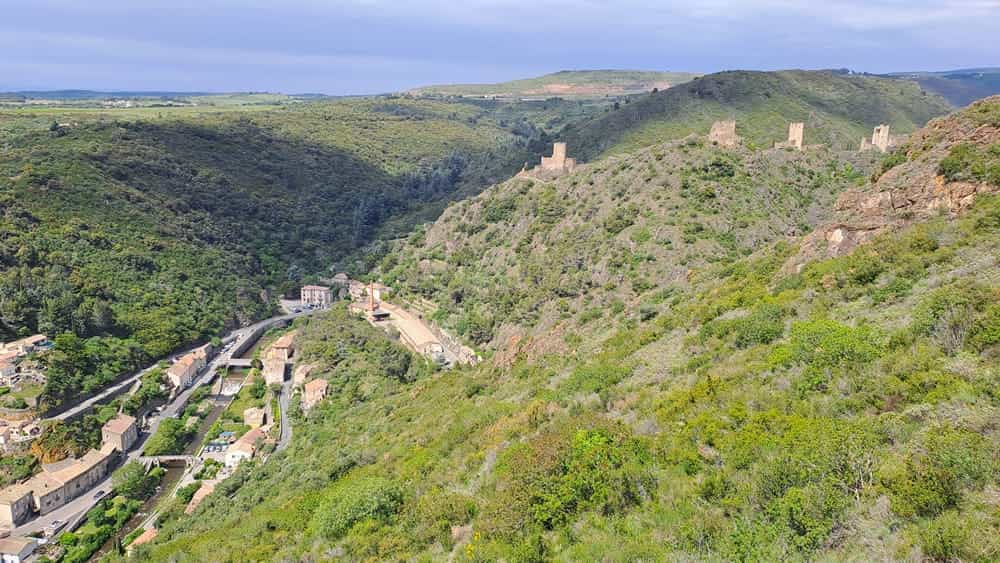
We did explore the town down below which I imagine would be quite chilly in winter. We saw brave fishermen using the well constructed river banks which ensure that all the water from the mountains gets out of the valley without destroying the town, take note Nelson City Council.
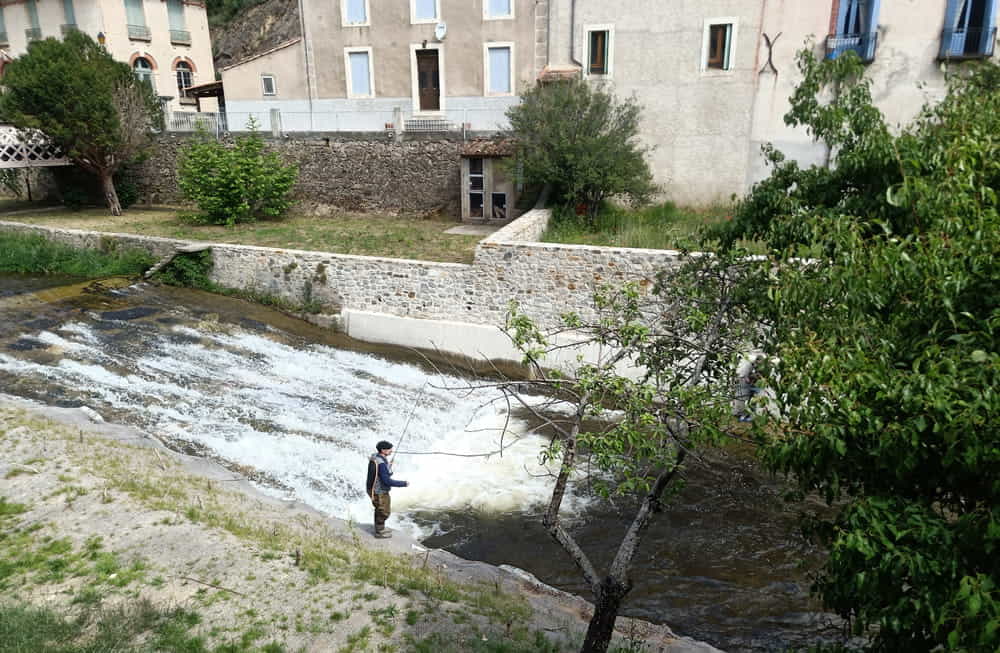
After visiting lots of little towns looking for an open bakery, as well as taking time out from a crazy GPS, we finally arrived at Minerve, along with the rest of the holiday makers. This town doesn’t charge to see the wonders of geography and history, except for the car parking which is quite acceptable considering the cost they must have gone to create a practical place to control the influx of 300,000 tourists a year.
Minerve is a small village perched on a rocky outcrop, a natural fortified town formed in the canyons of the two rivers which converge here, Cesse and Brian. There are two natural tunnels , the "Pont Grand", 228m long and varying in height from 6m to 28m, and the "Pont Petit", 126 m long and with an average height of 15 m. The natural ponts (bridges) are not caves, the river flows through them and tourists can walk through and seek geocaches. Minerve also has tourist shops and cafes; we went for the take-away ham roll.

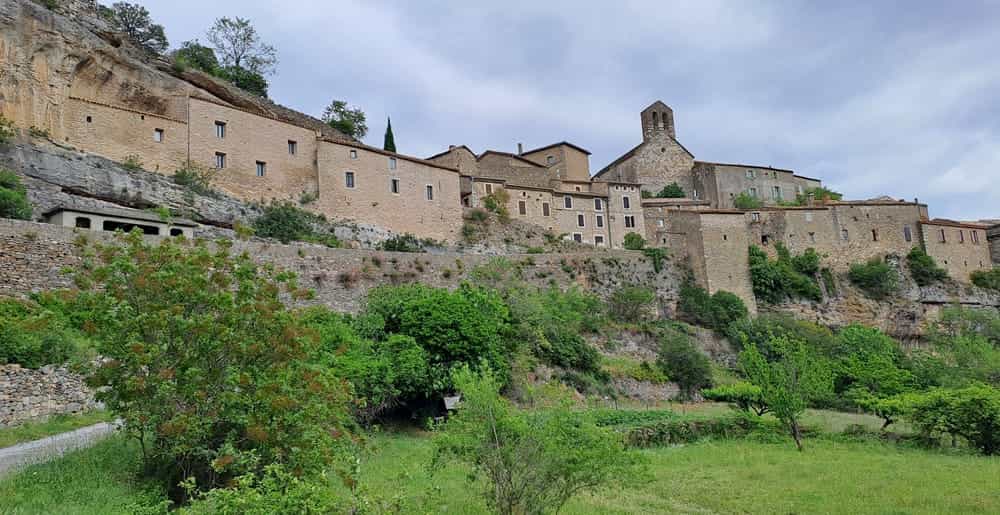

Minerve has a Cathar history; the local lord in the 13th century made the town a refuge for Cathars, however after the Massacre in Beziers and the capture of Carcassonne during the Crusade of Albigensians, an inquisition was set up against the Cathars, and the city of Minerve was marched upon to flush the Cathars out. The Cathars were defeated by their water supply being cut off. However, determined not to convert and give up their faith, a number chose to end their life here.
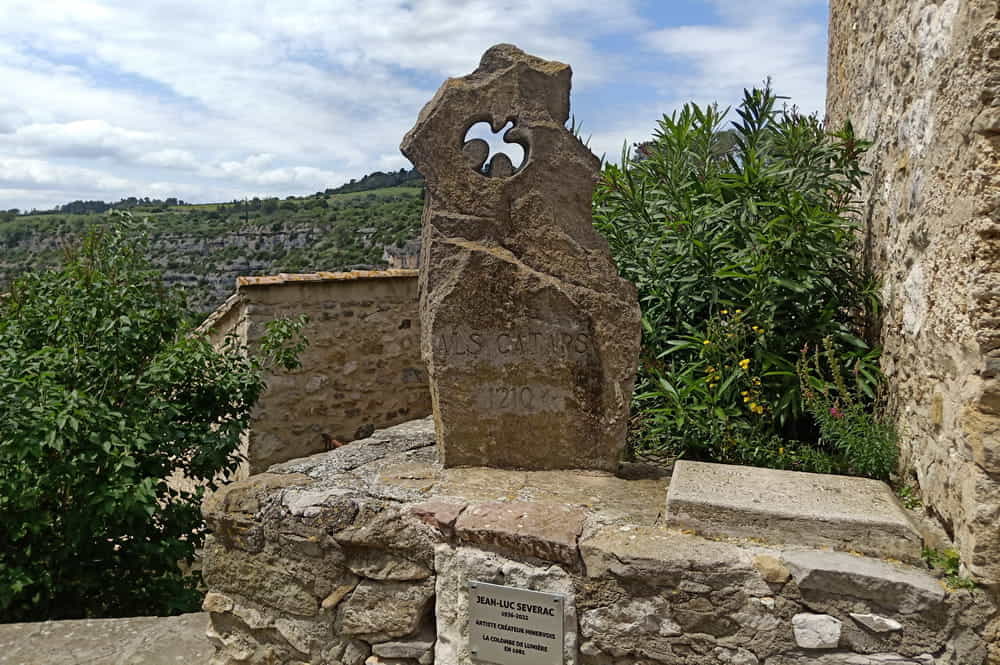
The little birdie below came and sat on Roger’s shoulder, apparently it is either good luck for peace and freedom or the bird wanted to pass on a message; well, it wasn’t to tell us where the cache was hidden.
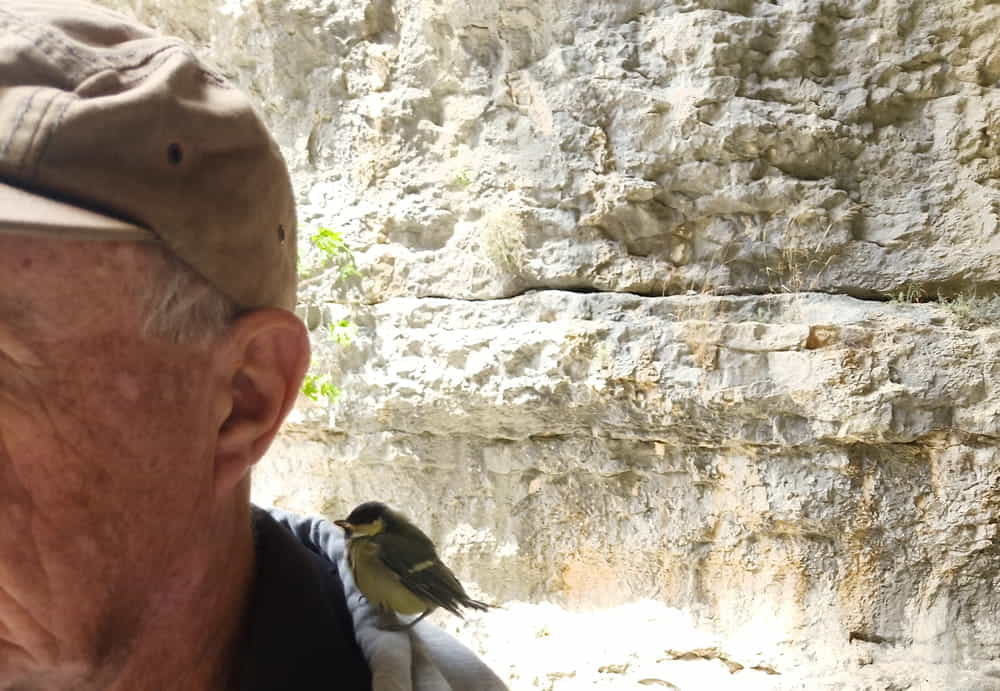
We took advantage of Carrefour’s generous offer to provide a shopping experience on a public holiday. This is the land of cassoulet, but also like a lot of France the place where offal is a big seller. I’m not opposed to most offal products except tripe, no matter how fancy they dress it up and give it a flash title. Below is brains and tongue which I will eat in aspic jelly any day.

Cheese Experience No.27 - Bleu D’Auvergne and bread mold Roger’s choice of cheese toady was Bleu D’Auvergne, an AOC (production controlled) lightly salted, creamy blue vein cheese. Bleu d'Auvergne was developed in the mid-1850s by a French cheesemaker named Antoine Roussel who after noting that blue mould on his cheese had an agreeable taste he conducted experiments to determine how such mould could be induced. Roussel discovered that the application of bread mould created the veining, and that pricking the curd with a needle provided increased aeration enabling the blue mould to grow in the pockets of air within the curd. Many cheese producers now use this needling and bread mould process; however today Bleu d'Auvergne is prepared via mechanical needling.
